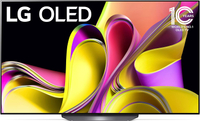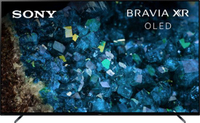Best OLED TV in 2024: Tested and reviewed
The top OLED TVs from LG, Sony and Samsung
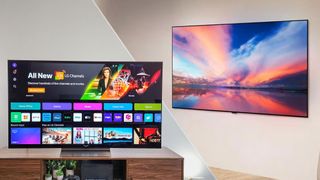
The best OLED TV is a prestigious title. OLED TVs are the pinnacle of picture reproduction, phenomenal motion processing and top-of-the-line upscaling. With unbeatable black levels and perfect contrast, they offer a cinema-like experience for not that much more money than a traditional LED-LCD or QLED TV.
OLED TVs are my go-to choice when kitting out a home cinema. Because of their price, I don't put one in every room of my house, but I love using one as my main TV. As for which OLED TV gets that coveted spot, it changes every year. Some years it's an LG OLED like the LG C3 OLED, while other years it's a Samsung like the new Samsung S95D OLED. On occasion, it's been a Sony OLED and once, a few years ago, it was a Vizio OLED when those were still a thing. In short, I've been in the OLED game for a long time and I've seen 90% of all the OLED TVs on the market.
Given how expensive they are, however, I know that looking at so many OLED TVs is a real luxury that comes with being the Managing Editor of TVs and AV for Tom's Guide, and I want to help you make the best choice when picking out one for your own home. To that end, I've put together a guide to the top models, using both my real-world experience with these TVs as well as comprehensive test data that the Tom's Guide team has collected using specialized instruments and calibration software.
This list is updated every 30 days or so to ensure that the newest models are on the list as they become available to buy, but be sure to keep scrolling to the "Also Tested" section at the bottom to see additional options from previous years.
The quick list
The best OLED TV you can buy: a visual guide
Why you can trust Tom's Guide
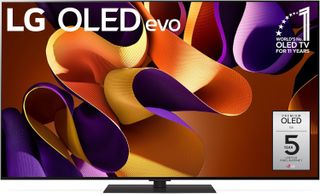
Picture ★★★★★
Features ★★★★★
Value ★★★★☆
The new LG G4 OLED is the best OLED TV of 2024. Featuring an enhanced MLA OLED panel from LG Display, it's brighter than previous LG OLEDs and its picture processing is top notch.

Picture ★★★★☆
Features ★★★★★
Value ★★★★★
The LG C3 OLED is a great choice if you want a rock-solid OLED TV without overspending. It's available for under $1,000 and in multiple sizes, which is very helpful if you're shopping for a bedroom or office.
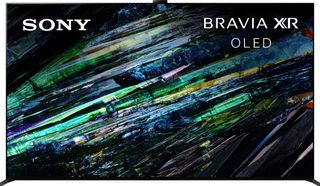
Picture ★★★★★
Features ★★★★★
Value ★★☆☆☆
If it wasn't significantly more expensive than the other models on the list, the Sony Bravia XR A95L would be the best OLED in 2024. However, if you've got the money for it, it's truly Sony's best OLED TV to date.
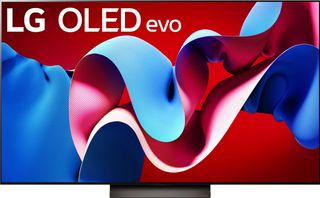
Picture ★★★★☆
Features ★★★★☆
Value ★★☆☆☆
Hot off the production line, the LG C4 is the latest version of LG's middle-child OLED TV. At launch, it's a bit more expensive than we'd like, but it offers great performance and (likely) will come down in price in just a few months.
About the author

My name's Nick and I look after our guides to the best TVs, best OLED TVs and best 4K TVs. OLED TVs are, in my opinion, one of the biggest revolutions in display technology of the past 20 years. They offer perfect black levels and wide color gamuts, while seeing incremental upticks in brightness every year. Lots of research goes into making an OLED TV look the way it does, and the same amount of care, time and research has gone into assembling this list. Why trust me? I have 10 years of experience covering AV, and before I joined Tom's Guide I was formerly the Senior Editor, TV and AV at TechRadar. If you've read a story about the breakthroughs of OLED TV sometime in the last decade, it probably has my name on it.
The full list: Best OLED TVs in detail
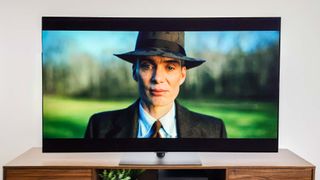

Specifications
Reasons to buy
Reasons to avoid
The title of best OLED TVs can swing back and forth between LG, Samsung and Sony. But this year, the honor belongs to LG with the LG G4 OLED. While Samsung and Sony are pushing QD-OLED in their flagship models, the LG G4 OLED offers an enhanced version of WOLED with 2nd-generation Micro Lens Array technology. That's a real mouthful, but the basic idea here is that this new panel can produce better brightness than any other LG OLED previously, and it does so safely for long periods of time.
In our lab tests, the LG G4 OLED reached a peak brightness of almost 1,500 nits, while maintaining a color accuracy of 1.4041. That's a heck of a lot better than any other OLED TV. Add to that its low input latency of 9.2ms in Game Mode, and you've got the recipe for an award-winning OLED that can both play cinema-quality movies perfectly and give gamers an amazing experience.
Our test results and our anecdotal testing have proven to us beyond any doubt that this is the best OLED TV available to buy right now, bar none.
Read our full LG G4 OLED review.
Best Value OLED TV
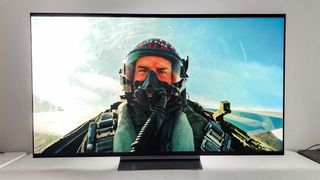
Specifications
Reasons to buy
Reasons to avoid
For years, OLED has been synonymous with words like "expensive" because of their lofty sticker prices. These days, though, OLED TVs aren't significantly more expensive than their mid-range Mini-LED counterparts. The LG C3 OLED proves that point by costing under a grand for the 42-inch and 48-inch models, while keeping pace with the competition's pricing at 55-inch and 65-inch screen sizes.
The variety of screen sizes and the myriad price points is what makes the C3 a good pick if you're on the fence about dropping a ton of money on an OLED. You can dip your toes in with a smaller model to see what you think before trading out the 65-inch TV in your living room. The good news is, besides some minor differences in peak brightness, all the models have similar specs. They all are 120Hz native refresh rates and sport four full-spec HDMI 2.1 ports. In our tests, the LG C3 hit around 820 nits at peak brightness and covered 98.98% of the UHDA-P3 Color Gamut. That's a drop down from the LG G3 mentioned above, but still quite admirable.
It can't overtake the leaders in the category like the Samsung S95C or Sony A95L, but the LG C3 OLED is a fantastic screen that you can buy for a lot less than you'd think.
Read our full LG C3 OLED review.
Best Premium OLED TV
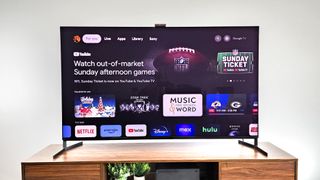
Specifications
Reasons to buy
Reasons to avoid
The top picks on our list are there because we think they offer the best bang for your buck. But if money isn't a factor in your buying decision, then the A95L OLED from Sony should definitely be in consideration. Its picture isn't just good, it's absolutely jaw-dropping. Everything we watched on it during our testing looked better than in the cinemas thanks to its perfect black levels and perfect motion processing.
Its top-class picture processing and audio performance help justify the high sticker price, as does its support for Google TV. Even more so than LG's WebOS or Samsung's Tizen, Google TV does an exceptional job delivering recommended content based on shows and movies you've liked previously, and is easily customizable through the settings. With a Delta E of 2.856 right out of the box, it doesn't take much to get colors looking their absolute best, but Google TV doesn't make extra tweaking harder than it needs to be.
For nearly $3,000, it targets cinephiles with cash to splash, but the A95L needs to be seen to be believed.
Read our full Sony Bravia XR A95L OLED review
Best For Gaming
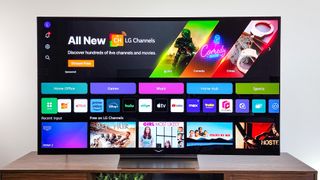
Specifications
Reasons to buy
Reasons to avoid
If you don't follow them closely, it can be hard to know which OLED TVs are new and which ones have been sitting on store shelves for the last 12 months. The LG C4 OLED is the newest 2024 model and just became available in April of this year.
Because it's so new, it's more expensive than last year's C3 OLED, but our lab tests show that it offers a higher peak brightness (1,049 nits on the C4 vs 820 nits on the C3). If you plan on watching mostly HDR content from sources like Max, Disney Plus, Netflix and Amazon, then it's worth forking over the extra money. If you still watch HD/SDR content from your cable box, then save some money by picking up the LG C3 OLED instead.
Read our full LG C4 OLED review
Also Tested
Here are all the OLED TVs that either are a bit too old to make it to the top of our list, or just missed a spot due to a few issues. Despite their flaws, however, they're still worth researching if you're in the market for a new OLED TV.
Samsung S95C OLED TV ★★★★★
The Samsung S95C OLED was the top pick for the best OLED TV until the LG G4 OLED came around. Releasing in 2023, the S95C uses a fantastic QD-OLED panel for high brightness and strong color vibrancy. If you don't mind a TV from last year, it's still a great pick.
LG B3 OLED ★★★★
When it comes to the most affordable OLED TVs, the LG B3 OLED is king. It's often available in a 55-inch screen size for right around $1,000 and it's a very good screen for the price. The only thing going against it is that the C3 OLED, our top value pick, is only a few hundred dollars more and has a better processor.
Sony A80L OLED ★★★★
If you want a TV that sounds as good as it looks or one that pushes the limits of the screen size without breaking the bank, the A80L delivers. It's older than a lot of the models above, but it sounds great and offers a great picture quality.
OLED TV FAQs
How much do OLED TVs cost?
The cheapest 4K OLED TV is the LG A2 OLED, our final pick on the page. It's there because it can't contend with the other OLED TVs from Samsung, Sony or LG, but it's at an impossible-to-beat price.
That said, the majority of OLED TVs in the 55- and 65-inch range sell for between $1,500 and $2,000, but premium models will often cost more, and larger screen sizes can routinely sell for $3,000 or more.
What is OLED?
OLED stands for Organic Light Emitting Diode, a display technology that uses organic compounds to create clusters of red, green, blue, and white points of light to make up the individual pixels of the TV. On a 4K TV with 3840 x 2160 resolution, that means a single OLED panel will have 8.29 million pixels. And unlike standard LCD TVs, each one of those pixels produces its own light, and can be individually turned on or off, brightened or dimmed.
That pixel-level control of brightness lets OLED offer the best contrast of any display technology, with neighboring pixels delivering everything from intense brightness to true black, and every color imaginable.
As a result, OLED TVs consistently outperform the majority of LED-lit LCD TVs, whether they use standard LCD panels or boost the picture quality with enhancements like quantum dots (also known as QLED) or discrete dimming zones.
You can find similar-performing technology out there (microLED is another display type that uses microscopic light-emitting diodes for perfect contrast) but OLED is still the most mainstream option out there.
Are OLED TVs worth buying?
If you want a truly excellent TV, OLED is absolutely worth considering. It offers better picture quality than standard LCD TVs can match, and with prices coming down every year, they're no longer prohibitively expensive either. In testing and reviews, OLED TVs have consistently offered some of the best picture quality available.
There are areas of performance where LCDs offer better performance. Brightness on OLED TVs is no match for the greater intensity you can produce with an LED backlight, and LCD sets don't have the same risk of burn-in or color drift that OLEDs have to contend with long-term. But in virtually every other area, from viewing angles to color accuracy, OLED sets match or beat LCD-based competitors hands down.
But there is some question of whether that improved quality is worth the added expense. When there are 4K models selling for under $500, why spend $1,000 or more on an OLED set? There is definitely a case to be made for spending less for quality that is comparable, if not exactly the same.
But if you want the best color, contrast and overall quality you can get from a TV today, OLED is the way to go.
How to choose the best OLED TV
How to choose the best OLED TVs for you
The above selection of OLED TVs offer an embarrassment of riches for TV shoppers to choose from, with everything from basic functionality to advanced smart features and premium designs.
The biggest factor in most shopper's decision making will be price, but other differences include physical designs.
Smart features are also a differentiator. LG sets offer a pretty consistent experience across all of its models thanks to the webOS platform, but Sony's Google TV and Samsung's Tizen sets have strengths and weaknesses of their own.
Interested in a specific TV brand, price range or screen size? Check out our picks for the best TVs in each.
Best TVs | Best 4K TVs | Best smart TVs for streaming | Best TVs for gaming
The best TVs under $1000 | The best TVs under $500
Best TV brands | Best Samsung TVs | Best TCL TVs | Best LG TVs | Best Roku TVs | Best QLED TVs | Best 8K TVs
The smallest smart TVs | Best 43-inch TVs | Best 50-inch TVs | Best 55-inch TVs | Best 65-inch TVs | Best 70-inch TVs | Best 75-inch TVs | Best 85-inch TVs
How we test the best OLED TVs
How we test OLED TVs
Every OLED TV we review goes through a thorough testing and evaluation process, starting with rigorous lab testing and finishing with eyes-on evaluation by our reviewers. There's a lot more to it than just putting on a couple of 4K Blu-ray movies or hooking up a game console.
In our TV test space, we submit every TV to a number of lab tests, using industry-standard equipment, such as a calibrated spectrophotometer, calibration software and a dedicated test pattern generator. We measure for several indicators of picture quality, but these are the main metrics used in all of our reviews:
Color gamut, which measures how much color a given TV can produce. Expressed as a percentage rating, most OLED TVs meet or exceed 100% of the Rec709 color space.
Color accuracy, which measures the average deviation from perfect accuracy, expressed as a number (Delta-E), with higher numbers indicating less accurate color.
Contrast, measuring the difference between the darkest darks and brightest brights that a TV can produce, which is expressed as a ratio.
Brightness, measuring the peak luminance of a panel or display. This measure is reported in nits, an industry term for candela per square meter (cd/m2).
Lag time is the interval between a signal, such as button press on a game console, and the subsequent change registering on-screen. Measured with a Leo Bodnar Video Signal Input Lag Tester, this is measured in milliseconds, and provides a good indicator of how well-suited a TV is to modern gaming.
We pair this lab testing with hands-on time, viewing video samples and movies to see how these numbers translate into real-world performance. With that information, we can tell you which TVs look best, sound best and offer the best viewing experience.
Finally, we also evaluate the smart TV software and menus, getting a feel for the navigation and functions of each TV. We look at everything from the remote control design to the voice interaction to let us meaningfully talk about the smart features and overall ease-of-use for a smart TV.
Sign up to get the BEST of Tom's Guide direct to your inbox.
Get instant access to breaking news, the hottest reviews, great deals and helpful tips.

Nick Pino heads up the TV and AV verticals at Tom's Guide and covers everything from OLED TVs to the latest wireless headphones. He was formerly the Senior Editor, TV and AV at TechRadar (Tom's Guide's sister site) and has previously written for GamesRadar, Official Xbox Magazine, PC Gamer and other outlets over the last decade. Not sure which TV you should buy? Drop him an email or tweet him on Twitter and he can help you out.
-
Apple Jackson Is there a reason you chose last year's LG models across the board? I have the 2021 model (C1) arriving tomorrow as a replacement to my tragically murdered B7 (2017) model, and now I'm getting nervous that I should've gone with last year's. With the current deals out there the newest model was actually cheaper though. Quite a testament to LG quality though that these TVs barely go down in cost. My old 2017 model is only about $150-200 less than I paid almost 5 years ago now. And, as I mentioned, last year's model costs as much or more than this year's, even with this year's models widely available.Reply

